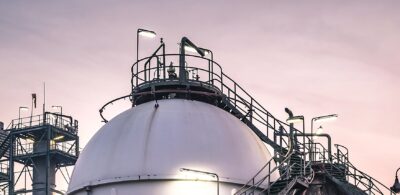The importance of gas to Australia’s future
31 May 2021
Several recent announcements by the Federal Government demonstrate its intention to have gas play a central role in Australia’s future energy mix.
The Federal Government has:
- announced a new gas-fired power station at Kurri Kurri in the Hunter Valley;
- released the National Gas Infrastructure Plan – Interim Report (the Report); and
- announced various budget measures.
The Government measures are aimed at addressing a forecast shortfall in dispatchable power as well as gas affordability and reliability issues.
These changes are aligned with, and develop, the Federal Government’s Gas-Led Recovery Plan.
New gas power plant
On 18 May 2021, Energy Minister Angus Taylor announced that the Federal Government will fund, construct and own (through the Government-owned company Snowy Hydro Limited) a gas-fired power plant at Kurri Kurri in the Hunter Valley, at a construction cost of approximately $600 million.
The aim of this power plant, alongside other gas measures, is to secure reliable and affordable energy for NSW and Australia. The plant is intended to fill the gap in dispatchable energy generation resulting from the closure of AGL’s Liddell coal-fired power plant in 2023.
National Gas Infrastructure Plan – Interim Report
The Report highlights that domestic gas supplies are forecast to fall short of demand by 2024. The Report proposes solutions and critical infrastructure priorities that can be brought online before 2027 (the period of focus for the Interim Report) to address the shortfall.
The Report identifies the following key components of an effective solution to the imminent shortfall:
- increasing local production from the Bowen and Surat basins;
- developing new production in existing offshore basins in Victoria;
- developing onshore gas production in Victoria (once the Victorian moratorium on conventional onshore gas exploration and production ends on 30 June 2021; there is a permanent ban on coal seam gas production in Victoria);
- supply from the Santos Narrabri Project in New South Wales, if a decision to proceed with development is taken;
- enhanced gas storage capacity from the proposed Golden Beach storage facility in Gippsland, Victoria (near Longford) and the expansion of the existing Iona storage facility near Port Campbell, Victoria being identified as critical infrastructure priorities;
- expanding pipeline capacity on the South West Pipeline; and
- building a new LNG import facility, with the Port Kembla Import Terminal proposed by Australian Industrial Energy being seen as the most advanced of six current proposals.
Central to resolving the identified gas shortfall is timely investment by the market in these critical infrastructure priorities.
The Report identifies that challenges for building medium and long-term solutions, such as developing resources from existing basins and identifying new basins, include the cost associated with new gas exploration and the long-lead time for gas from new developments to be available to the market. The Federal Government has already committed $28.3 million to unlock supply in five strategic basins in the Northern Territory and Queensland.
The first full National Gas Infrastructure Plan, to be delivered in late 2021, will consider these more complex investments and identify, and signal to the market, the medium to longer-term east coast gas market infrastructure needs up to 2040. Overall, the Federal Government’s aim is to facilitate a more strategic approach to infrastructure development over the longer term, while encouraging the private sector to make timely investments.
Budget measures
In the latest budget the Federal Government announced that it will allocate approximately $58.6 million for a ‘gas-led recovery’, which includes:
- up to $38.7 million to support critical gas infrastructure projects;
- $5.6 million to strengthen the Government’s gas system planning framework through delivery of the National Gas Infrastructure Plan;
- $6.2 million to accelerate the development of the Wallumbilla Gas Supply Hub;
- $4.6 million to develop initiatives that empower gas reliant businesses to negotiate competitive outcomes in their gas supply agreements; and
- $3.5 million to design and implement a framework to facilitate Commonwealth support for medium to long-term gas infrastructure.
Alongside these measures the Federal Government has announced further funding for electricity projects, including:
- a $24.9 million package to assist new gas generators to become hydrogen ready;
- up to $30 million for the Port Kembla gas generator project;
- $30 million to support a big battery and the roll-out of micro-grids in remote Indigenous communities the Northern Territory;
- up to $76.9 million to secure the Portland aluminium smelter’s participation in the Reliability and Emergency Reserve Trader scheme;
- up to $19.3 million to support the deployment of a renewable energy micro-grid incorporating hydrogen in the Daintree, Northern Queensland; and
- $34.3 million to implement the Federal Government’s reform agenda including post-2025 electricity market reforms and expanding the role of the Australian Energy Infrastructure Commissioner.
Future of gas
The Gas-Led Recovery Plan highlights the Government’s intention to make gas the core dispatchable generating resource for the NEM to maintain reliable power alongside renewable energy sources and to address supply and affordability issues facing the gas sector.
The Federal Government initiatives discussed above represent key steps in the implementation of the Gas-Led Recovery Plan with further steps to be addressed in the National Gas Infrastructure Plan to be released in late 2021.
Authors

Partner
Associate
Tags
This publication is introductory in nature. Its content is current at the date of publication. It does not constitute legal advice and should not be relied upon as such. You should always obtain legal advice based on your specific circumstances before taking any action relating to matters covered by this publication. Some information may have been obtained from external sources, and we cannot guarantee the accuracy or currency of any such information.

